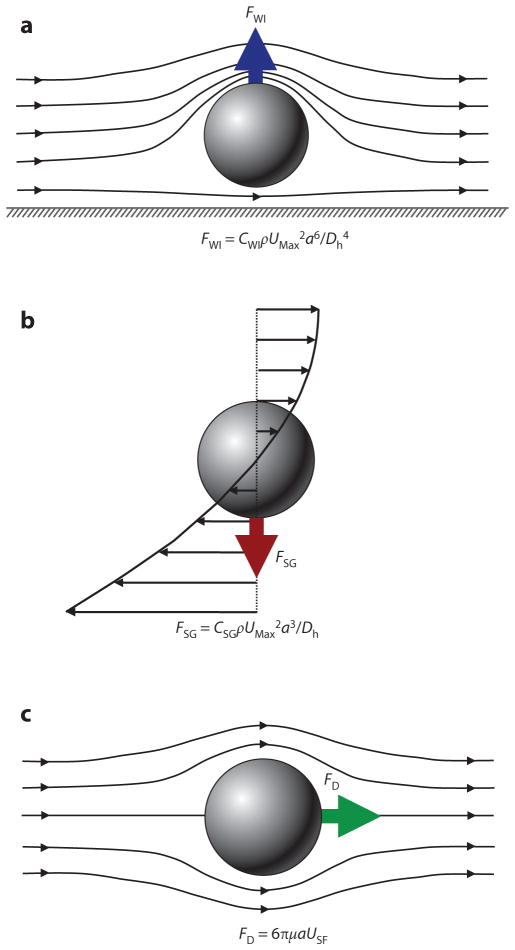Figure 3.
Schematics and equations describing the dominant forces in inertial focusing systems. (a) Wall interaction force: A particle moving near a wall will cause a pressure buildup on the wall side of the particle owing to the constricted flow on that side that imparts a force directed away from the wall. (b) Shear gradient lift force: A particle in a parabolic velocity field will experience a larger relative velocity on the side of the particle away from the inflection point (maximum of the parabola). This difference in velocity causes a pressure difference that imparts a force directed toward the higher-relative-velocity side of the particle. (c) Secondary-flow drag force: A particle in a uniform flow at low Reynolds number experiences a force relative to the difference between the particle velocity and the fluid velocity, also known as Stokes’ drag. Abbreviations: μ, fluid viscosity; ρ, fluid density; a, particle diameter; CSG, lift coefficient for the shear gradient lift force; CWI, lift coefficient for the wall interaction force; Dh, hydraulic diameter of the channel; FD, secondary-flow drag force; FSG, shear gradient lift force; FWI, wall interaction force; UMax, maximum velocity of the fluid; USF, secondary-flow velocity.

